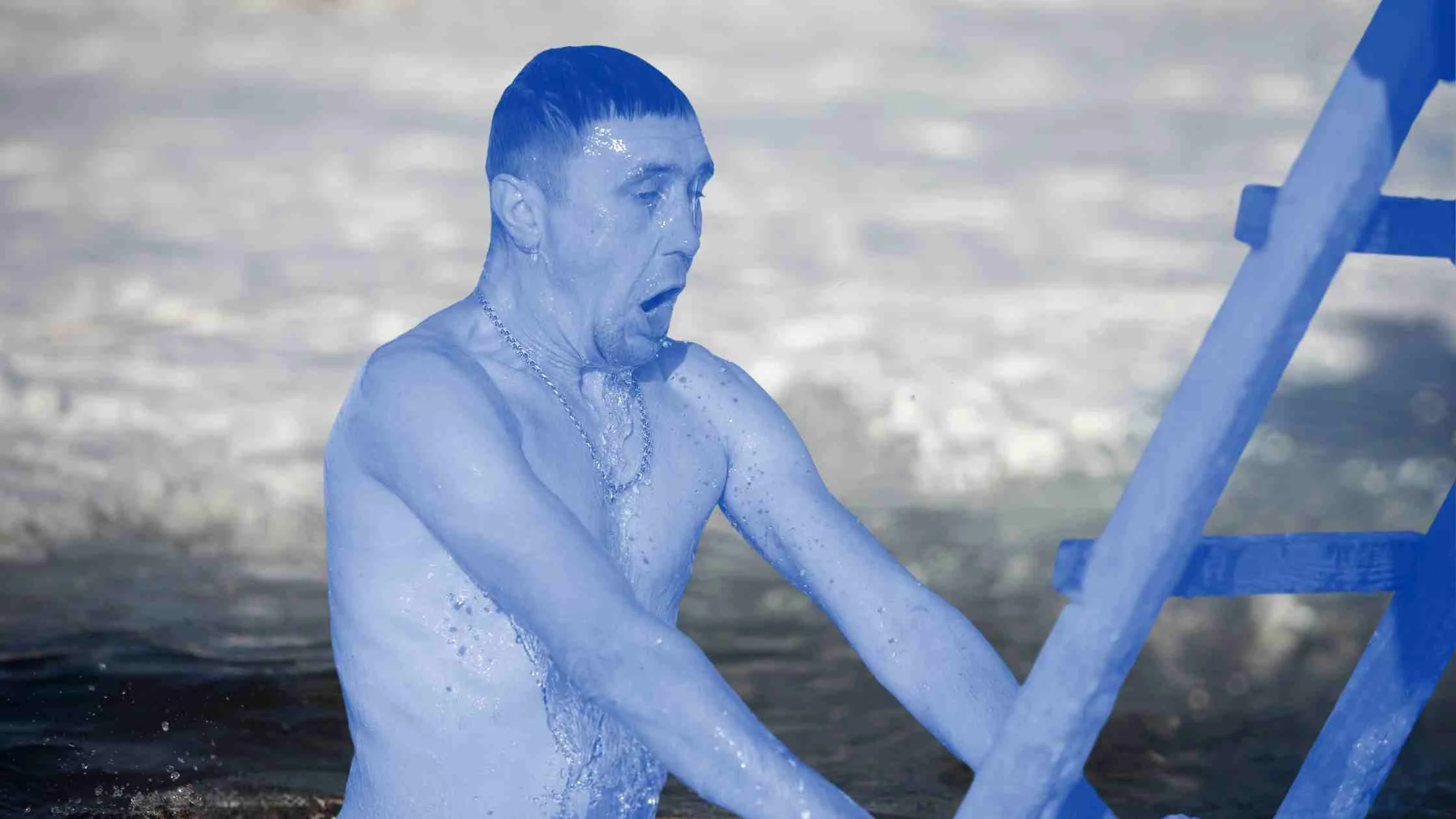Are Ice Baths Dangerous? Understanding the Risks, Benefits, and Best Practices
Are Ice Baths Dangerous?
With the burgeoning of ice baths as a daily practice, the early adopters phase has passed and there is a shift into the mainstream realm for cold plunge. Progressing from traditionally a practice for athletic recovery, taking an ice bath at home or in a dedicated recovery space is now practiced by many outside the “performance” realm.
With the intensity that extreme cold temperatures places on our physiology, to deny that ice baths have the potential to be dangerous would be ignorant. With the recent lawsuits against Wim Hof and Innerfire BV, the inherent risks of both breathwork and water exposure have been thrust into the limelight.
While many breathwork and ice bath practitioners take a strong risk assessment approach to ice baths as a therapy practice, it can be difficult to determine how someone will respond to the cold, making it important to understand the risks ice baths can pose to existing injuries, illnesses and trauma.
It is crucial to understand that ice baths are not without risks, even for the elite. In this article, we will explore the potential dangers of ice baths, focusing on the risk of hypothermia, the phenomenon known as the "after drop", as well as some common contraindications to cold water immersion.
We will also discuss how to minimise these risks and how to effectively rewarm after cold exposure, with an emphasis on the metabolic benefits of allowing the body to naturally reheat. Additionally, we will provide guidelines for the best cold therapy protocols, including recommended temperature and time.
The Risks of Ice Baths
Ice baths cause a cold shock response (CSR). This cold shock response, as well as the extended exposure to cold temperatures on the body, hold the key to both the benefits and the risks of ice baths and cold plunge practices.
“Drowning is a leading cause of accidental death. In cold-water, sudden skin cooling triggers the life-threatening cold shock response (CSR). The CSR comprises tachycardia, peripheral vasoconstriction, hypertension, inspiratory gasp, and hyperventilation with the hyperventilatory component inducing hypocapnia and increasing risk of aspirating water to the lungs.”
Read Also: The Best Portable Inflatable Ice Baths
Below is an outline of some of the main reasons ice baths are dangerous if not practiced in a calculated and conscious way, without consideration for contraindications.
1. Hypothermia
It is no surprise that the main risk of exposure to extreme cold temperatures is the cold related injury – hypothermia. Hypothermia presents a fine line for people intending to push cold exposure to the limits. Hypothermia is the most significant risk associated with ice baths. It occurs when your body loses heat faster than it can produce it, causing your core temperature to drop below the normal range of 98.6°F (37°C).
Prolonged exposure to cold water can lead to hypothermia, which, if left untreated, can be life-threatening and lead to death.
Several scientific studies have explored the risks of hypothermia in cold-water immersion. A study published in the "Journal of Science and Medicine in Sport" (Wegmann et al., 2012) found that even relatively short exposures to cold water can significantly lower core body temperature and increase the risk of hypothermia.
This highlights the importance of monitoring exposure duration in ice baths.
To minimize the risk of hypothermia during an ice bath:
Limit the duration of the bath: Avoid staying in the cold water for extended periods, typically no longer than 10 minutes, with as little as 30 seconds being enough to achieve benefits.
Monitor your body's response: Pay close attention to signs of shivering, confusion, and loss of coordination. These are early signs of hypothermia.
Gradually adjust to the cold: Start with a cold shower and gradually introduce ice to reduce the shock to your system and gauge your own tolerance and develop awareness of your limits.
2. The After-Drop
The "after drop" is a phenomenon that occurs after exiting an ice bath. Even after you leave the cold water, your body's core temperature may continue to drop, potentially causing more significant problems. This can happen because the cold blood from your extremities, which was temporarily diverted away from the skin to protect vital organs, returns to the core.
Popular Article: Andrew Huberman’s Supplement List Is Dense, But Will Make You Superhuman
Scientific research on the after drop phenomenon underscores its significance. A study published in the "Aviation, Space, and Environmental Medicine" journal (Barwood et al., 2009) found that the after drop can lead to a more significant decrease in core temperature post-immersion, which may be of concern for individuals exposed to cold water by Health Physio Clinic In Sydney.
To minimize the risk of the after drop:
Keep moving: Physical activity generates heat, so engage in light exercises such as brisk walking or jumping jacks immediately after the ice bath.
Layer up: Have warm clothing, towels, or blankets ready to put on as soon as you step out of the bath.
Stay hydrated and refuel: Consuming warm, high-energy foods and drinks can help your body maintain its core temperature.
3. Psychophysiology
One of the often overlooked risks of cold water immersion is how it can interact with psychophysiology. The sheer intensity of cold exposure, namely the stress or shock response that it elicits even to those adapted to the cold, has been known to cause a negative interaction with existing trauma.
There have been many instances reported in the ice bath and breathwork community of severe reactions to cold water immersion, causing panic attacks, episodes of acute distress, vomiting, shock and bringing to the surface of “stored traumas”.
While the very practice of exerting conscious control of the breath during the challenging times of an ice bath can be an effective tool anecdotally for improving symptoms of anxiety and panic attack, it is extremely important to screen for such mental health issues and be prepared to provide effective coaching and guidance for people who may experience adverse affects from cold exposure relating to mental health history.
This is particularly important for people opting for a self experimental approach who know they may have some underlying trauma that could be triggered by the intensity of cold water immersion, to first seek professional medical advice for the suitability of the practice, in addition to opting for professional guidance by a qualified CWI practitioner or a trusted friend.
4. Contraindications
Due to the nature of the intense physiological stress cold water immersion places on the body, there a number of known contraindications to ice baths relating to specific medical conditions.
In general, anyone with any of the following medical history should either avoid or seek strong professional medical advice before deciding to use cold water immersion at all:
Heart issues
Stroke
Diabetes
Epilepsy
Brain injuries
Raynauds syndrome
Pregnancy
Autoimmune conditions like Cold Triggered Urticaria
There are also a number of secondary contraindications to ice baths, that pose an equally significant risk to taking an ice bath. These include:
High blood pressure
Kidney issues
Angina
Asthma
Migraines and headaches
Anxiety or panic disorders
For those guiding ice bath sessions in a commercial setting, it is very important to have a screening process to offer the best possible level of safety and duty of care for people, and be prepared to recommend avoiding cold plunge as a practice car for sale for people with contraindications like those mentioned above.
Best Cold Therapy Protocols
For those considering cold therapy, it's essential to follow recommended protocols to reap the benefits while minimising risks. Here are some guidelines:
General Protocol
The ideal water temperature for a general cold therapy practice is generally between 50°F (10°C) and 59°F (15°C). These temperatures are cold enough to induce shivering and therefore achieve the desired effects but not so extreme as to pose an immediate risk of hypothermia. Although the ideal time should be based on personal tolerance, the science indicates 11 minutes per week spread out over 3 to 4 sessions is a good aim rooted in science.
Duration
The recommended duration for a cold therapy session typically ranges from 2 to 10 minutes. Athletes and individuals with higher cold tolerance can opt for longer sessions, but beginners should start with shorter times. Of course, 10 minutes is a long time when referencing very low temperatures, so be sure to set your session length in relation to your cold conditioning and the temperature of the water to remain safe.
Weight Loss
The best weight loss ice bath protocol is considered to be 0° to 5°C (or a temperature that is challenging for you) for 1 minute on, followed by 1 minute off, repeated 5 rounds. This protocol provides 5 minutes of exposure and produces a shivering response conducive to activating brown fat, stimulating metabolic health.
Gradual Cooling
It's advisable to start with a simple cold shower. Gradually increase the difficulty of the cold therapy as you adapt to cold showers and become adapted or comfortable with your ability to withstand the cold. This approach minimises the initial shock, reduces risk, helps your body adapt to the cold, and encourages a consistent routine.
Monitoring
Be attentive to your body's signals during the cold therapy. Signs of discomfort and shivering can be normal, however it is important to acknowledge your limits and have awareness of your body.
Read Also: 7 Best Supplements To Increase Testosterone Naturally
Frequently Asked Questions
-
The main risks include hypothermia, the "after drop" phenomenon, and potential psychological impacts, especially for individuals with certain health conditions.
-
'After drop' refers to the continued decrease in core body temperature after exiting an ice bath, as cold blood from the extremities returns to the core.
-
To minimize risks, limit the duration of the bath, monitor your body's response, and gradually adjust to the cold. Adequate preparation and post-bath rewarming are crucial.
-
People with heart issues, stroke, diabetes, epilepsy, brain injuries, Raynaud's syndrome, pregnancy, and certain autoimmune conditions should avoid or be cautious with ice baths.
-
Following recommended protocols, like appropriate water temperature and duration, starting with cold showers, and being mindful of your body's signals, ensures safe practice.
-
Ice baths can help with muscle recovery, inflammation reduction, and may improve mental resilience and circulation.
-
The duration can vary, but it's typically recommended to stay no longer than 10 minutes, with even 30 seconds being beneficial.
-
While beneficial for many, it's not suitable for everyone, especially those with certain health conditions. Consulting a healthcare professional is advised.
-
Gradual exposure to cold, like starting with cold showers, and being aware of one's physical limits is important for preparation.
-
Engaging in light exercises to generate heat, dressing warmly, and consuming warm, high-energy foods and drinks can help in rewarming the body.
Conclusion
Ice baths offer numerous benefits when used appropriately, but they are not without risks, primarily related to hypothermia and the after drop phenomenon, as well as known contraindications.
To minimise these risks and maximise the metabolic benefits, it's essential to be mindful of your body's signals, limit your exposure to cold water, seek professional medical advice before cold water immersion and allow your body to naturally reheat after an ice bath.
When done correctly, ice baths can be a valuable tool for recovery and overall well-being, enhancing the balance between the benefits and potential dangers they present.
Always consult with a healthcare professional or trainer before incorporating ice baths into your routine to ensure they are suitable for your individual needs and conditions.
References:
Wegmann, M., Faude, O., Poppendieck, W., & Meyer, T. (2012). Pre-cooling and sports performance: A meta-analytical review. Journal of Science and Medicine in Sport, 15(3), 253-262.
Barwood, M. J., Corbett, J., Feeney, M., & Tipton, M. J. (2009). The afterdrop of body temperature during cold water immersion: influence of initial body temperature and thermal status. Aviation, Space, and Environmental Medicine, 80(3), 210-217.





